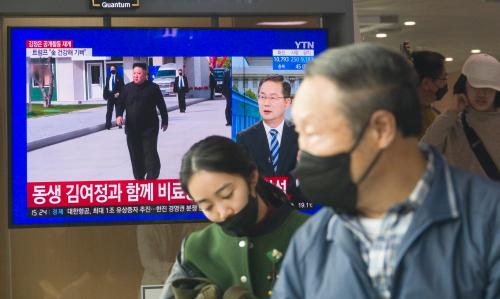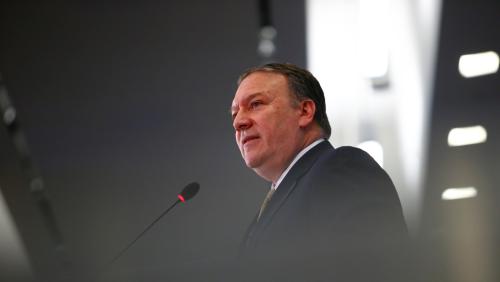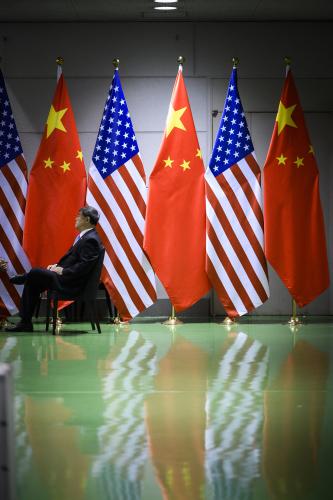Content from the Brookings Institution India Center is now archived. After seven years of an impactful partnership, as of September 11, 2020, Brookings India is now the Centre for Social and Economic Progress, an independent public policy institution based in India.
From November 3 to 14, Donald Trump will visit Japan, South Korea, Vietnam, the Philippines, and China. What can the Trump administration accomplish that would effectively address its priorities? What’s the likelihood of a significant breakthrough on trade, market access, or North Korean denuclearization? What can Trump’s team do to give the U.S. a legitimate “win”? Dhruva Jaishankar provides his take below, in a piece that was originally published on ChinaFile.
Let us give credit where credit is due. For all the talk of dysfunction and policy incoherence in Washington under President Donald J. Trump, his administration has started to get some things right, especially when it comes to Asia policy. It helps that some of the key positions in the U.S. government, including senior posts at the Department of Defense and important ambassadorial appointments, are finally being filled by competent and experienced personnel. Additionally, after some trial and error, regional policy has started to assume some consistency. Indeed, the Trump administration’s learning curve on Asia over the past year has actually been steeper than the Obama administration’s, which often reversed or moderated course during its first six years.
Admittedly, Trump’s Asia policy got off on the wrong foot, with the U.S. withdrawal from the Trans-Pacific Partnership (TPP) sending a strong signal of American commercial disengagement from Asia. The handling of the North Korea situation was also mismanaged, to the detriment of U.S. relations with South Korea, and raised genuine questions about Trump’s ability to handle sensitive crisis scenarios.
But a lot has changed. One, in contrast to his peculiar presentation in Beijing in March which appeared to inadvertently rehash Chinese talking points, Secretary of State Rex Tillerson produced a clear policy speech in Washington last week. Ostensibly about relations with India, Tillerson’s remarks offered a carefully-crafted but sharp critique of China’s “predatory economics,” subversion of its neighbors’ sovereignty, and disrespect of a rules-based order. It provides an important insight into the administration’s thinking about the Indo-Pacific region as a whole. Moreover, Tillerson, Mattis, and Vice President Mike Pence have laid some important groundwork with visits to Indonesia, Australia, and South Korea
Two, the broader policy direction has been complemented by action on the ground. This is most clearly manifested in more frequent U.S. freedom of navigation operations (FONOPs) in the South China Sea over the past several months.
Three, while the Trump administration’s emphasis on burden sharing may sit uncomfortably with European allies and partners, in Japan and India, the United States has found partners willing to step up and burden-share. Indeed, these now account for some of the more positive relationships that the Trump administration enjoys, despite niggling differences, including over trade. And finally, despite political distractions at the top, the strength of the U.S. system has persisted. For all the talk of the Philippines’ growing proximity to China under Rodrigo Duterte, it was U.S. special operations forces that helped that country’s military retake the city of Marawi from Islamic State-linked militants.
The ability to articulate a consistent policy line, follow through, work more seamlessly with partners in achieving those objectives, and retain strong habits of cooperation lie at the core of sound policy. As Trump heads to Asia on his maiden trip as President, he has the opportunity to build upon what has been a reasonably successful reversal and consolidation of his administration’s regional policy over the past few months.







Commentary
What’s changed in the Trump administration’s approach to Asia?
November 6, 2017